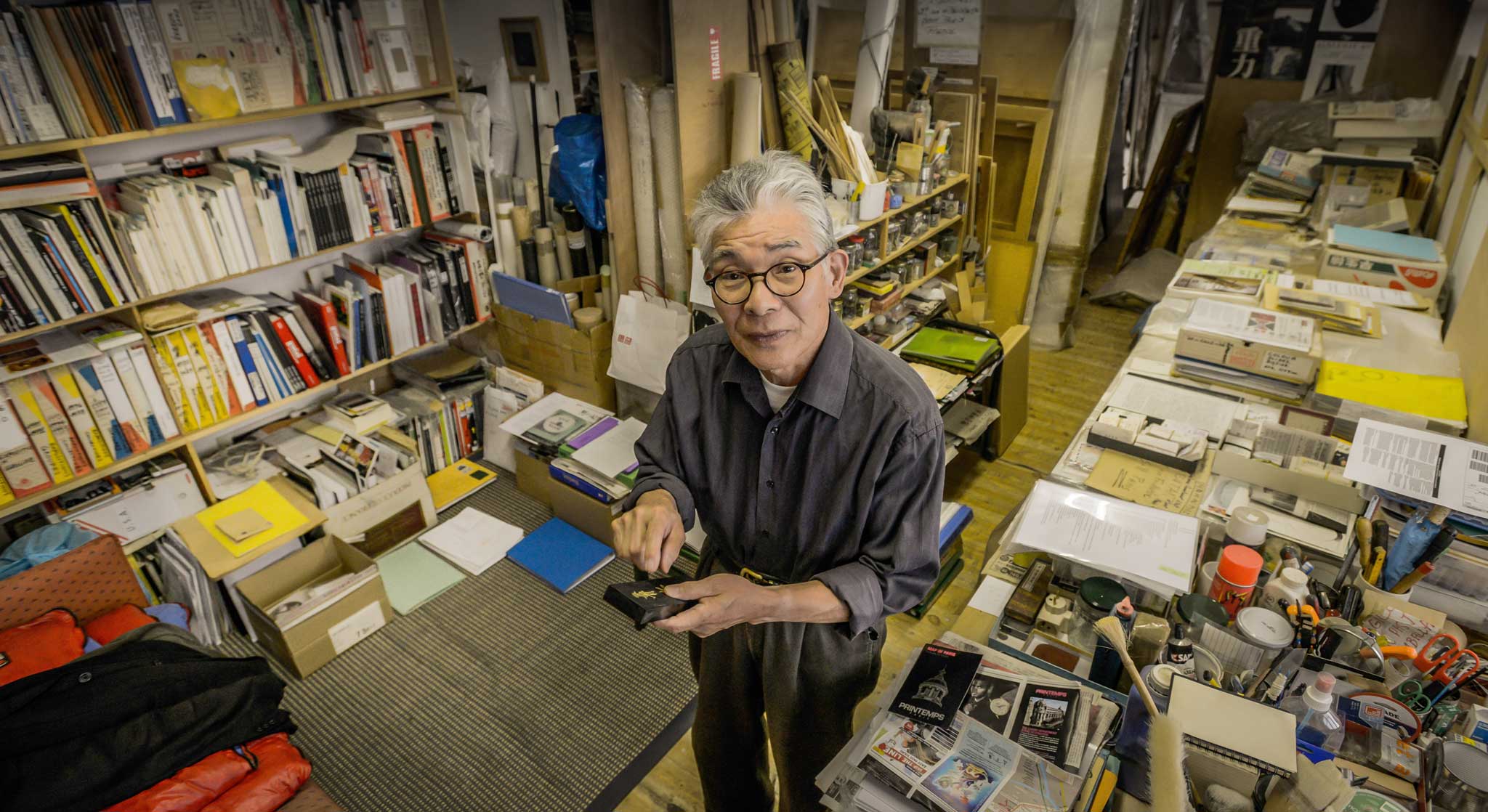In The Studio: Takesada Matsutani, artist
'It is important to have your own space. In it, I try to be honest'

Takesada Matsutani works in a former cabinet-maker's atelier in the Bastille area of Paris. He has been here for more than 20 years, a somewhat modest space flooded with light that pours in through a wall of windows. Ranged on a large, surprisingly chaotic table are the simple materials that he works with; boxes of compressed ink and the 4B pencils that he uses for his wall drawings; below, large pots of Elmer's Glue. He chooses to work alone. "It is important to have your own space. In it, I try to be honest."
Matsutani is a member of the revolutionary Gutai Group, formed in 1954 in Japan. Born in 1937 in Osaka near to Ashiya, where Gutai was based, he is a member of the second wave, as he was only a boy when the group was founded. In 1959 he asked to join and was denied entry, being told that his paintings had "been done". "It made me angry," he admits, and pointing at his chest adds: "it made me want to fight." He was 23 years old and "my world was Gutai".
The rejection inspired him to experiment. A friend at medical school showed him some microscope slides and, intrigued by the forms in the blood corpuscles, he tried to replicate them in vinyl glue. He wanted to make "painting that was three dimensional". Inspired by the glue's properties, he experimented with its elasticity, producing works that, he admits, have an erotic quality, even though "that was not in my mind". The works were accepted and he exhibited with Gutai before leaving for Paris in 1966 on a French Government scholarship.
While continuing to work with glue, Matsutani eventually began making graphite drawings. When he filled up the 10 metres of paper he would throw turpentine at the end, a performative gesture to mark its conclusion. Unlike fellow Gutai members who were famous for painting with their feet, falling into rolls of paper or hurling paint at a canvas, Matsutani's performances are more traditional, utilizing the materials he uses in everyday work.
In the case of Stream, a recent performance I witnessed, water from a pierced bag dripped on to a stone below, on which Matsutani rubbed his compressed Chinese ink stick (made for calligraphy) until the ink began to flow on to the paper below. He ended the performance by using his hands to spread the ink, making broad circular motions. "I wanted to make the harmony of the circle and wanted to stop the moment."
Matsutani is the only member of the Gutai who has permanently left Japan. He smiles his warm smile and says in the end, "We were really quite a provincial movement, very based in Japan." Even the most revolutionary piece – by Murakami, running through paper screens – was only inspired by his young son walking through a screen in his father's house when he was angry.
Takesada Matsutani: a Matrix at Hauser and Wirth, London W1 (020 7287 2300; hauserwirth.com) ends today
Subscribe to Independent Premium to bookmark this article
Want to bookmark your favourite articles and stories to read or reference later? Start your Independent Premium subscription today.

Join our commenting forum
Join thought-provoking conversations, follow other Independent readers and see their replies